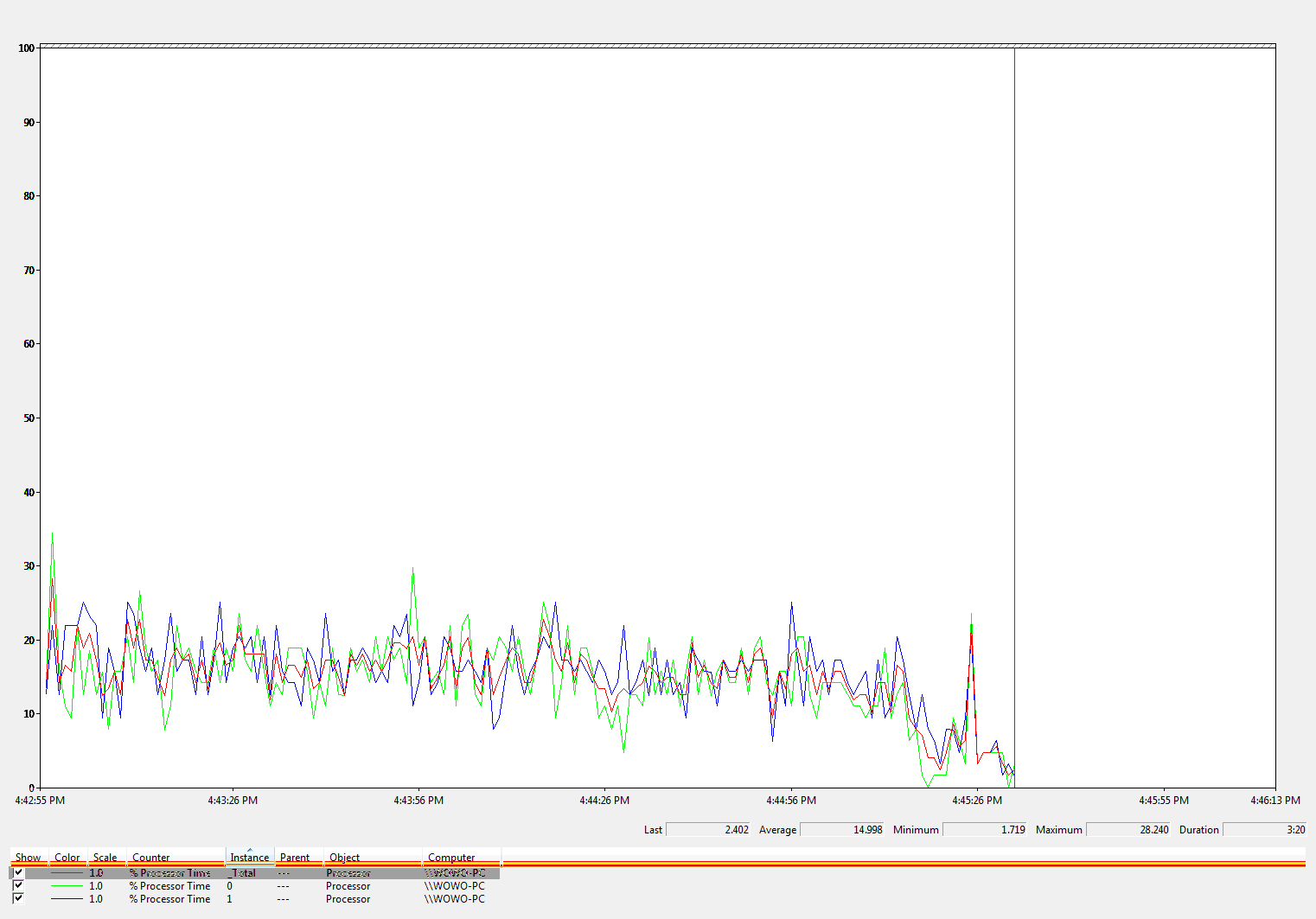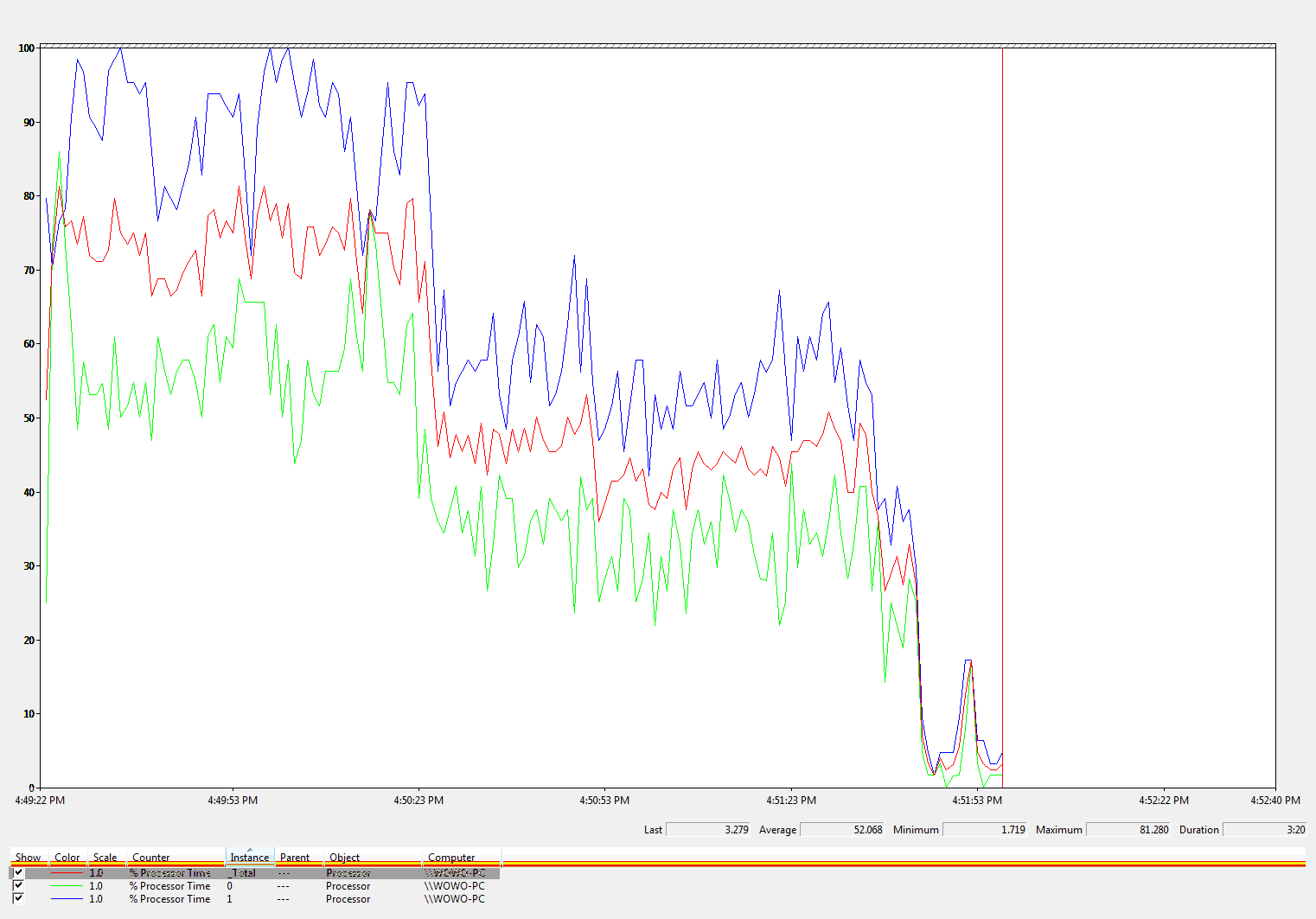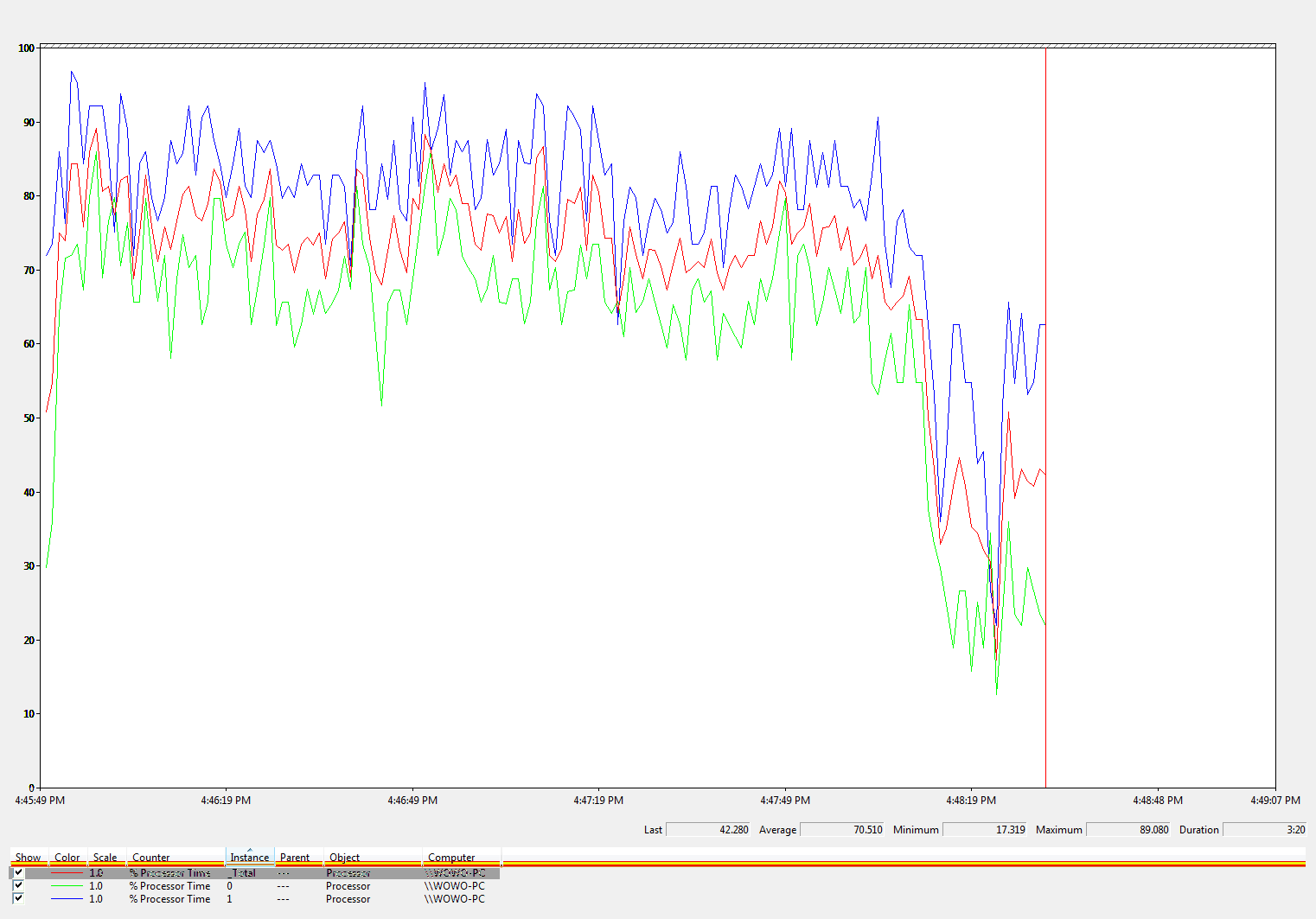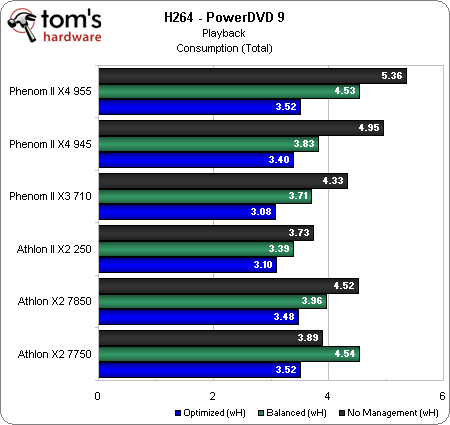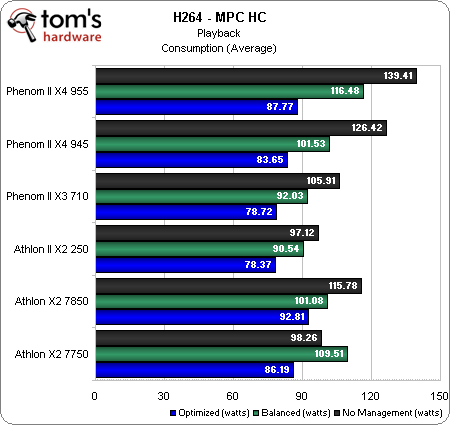Updated: Tuning C'n'Q: Maximize Power And Performance, Part 2
Benchmark Results: Video Playback
Now it’s time to see the power consumption of these processors when they’re doing very little work. These are the scenarios where most of us will spend a majority of our time. After all, not everyone runs benchmarks and games 24x7.
In these tests, we’re going to use the same H.264 video as before--Nine Inch Nails’ Beside You In Time (1080p trailer). Playback will also be executed through different codecs like DivX and WMV (not VC1). Why the extra tests? This should give us an idea of power consumption levels with and without hardware acceleration.
We’re also going to use not one, but several applications to view these videos. For H.264, we’re using Cyberlink’s PowerDVD and Media Player Classic--Homecinema. For DivX, we’re using Media Player Classic--Homecinema, and lastly, for WMV we’ll be using Microsoft’s Windows Media Player.
We can see how much hardware acceleration really helps reduce power consumption by letting the processor remain idle more often. Both PowerDVD and MPC-HC processor utilization are well below 20% (more precisely, 14%). WMV seems to be the most resource-intensive codec, hovering around the 75% mark, while DivX is slightly more frugal (55 to 75%).
Since this is video playback, performance is not the focus here. Suffice to say, all processors were able to play the test video smoothly at 30 fps, with and without power management.
Let’s see which processor consumes the least power when playing back video.
H.264--With Hardware Acceleration
Get Tom's Hardware's best news and in-depth reviews, straight to your inbox.
First, let’s talk about PowerDVD. Even with default Cool'n'Quiet settings, the Athlon II X2 250 consumes the least amount of power. Average and total power consumption results are not that different, mostly because the load and time spent are the same. Having more cores translates to an additional 8 to 12 watts power consumption, even with lowered voltages. The difference is higher with default Cool'n'Quiet settings, and even more without power management. The situation is practically the same if you’re using Media Player Classic--Homecinema as your player of choice.
Even if you don’t tweak the voltages, our results are evidence enough of just how much these processors can save power when performing less strenuous tasks. Tweaking voltages extends the savings you’ll realize with power management features enabled.
Current page: Benchmark Results: Video Playback
Prev Page Benchmark Results: Audio Encoding Next Page Benchmark Results: DivX And WMV, No Hardware Acceleration-
jedimasterben I'd be interested to see the tests performed on Windows 7 to see what the effect of reducing thread "jumping" would be.Reply -
cnox Dammit...how can this part 2 article be posted before the Building the Balanced PC Part 2?Reply
Cumon.... -
melangex3 Great Stuff. Keep up the good work. This is the type of review that will keep me coming back. How about throwing in the ever popular 720 BE and the new 620 or 630 just for giggles?Reply -
Ryun jedimasterbenI'd be interested to see the tests performed on Windows 7 to see what the effect of reducing thread "jumping" would be.Reply
I was thinking the same thing as well.
Also, were the BIOSs all updated? The asynchronous clocks problem you're experiencing with Athlon II X2 was supposed to be fixed with updated CPU microcode. -
redgarl I must admit that lately AMD is impressive. I got a PII X3 720 BE unleashed at PII X4 20 fully stable with an Asus M4A78T-E latest BIOS. Let simply add that my 2 radeon 4850 OC in Crossfire are running as fast as 2 stock 4870...Reply
If you take into account that the 2 cards only cost 82$ each for a total of 165$ for the two... I can hardly believe that so little money can give so much results. -
JimmiG With my Phenom X4 9650, I found Cool n Quiet to be pretty much worthless without tweaks. There were huge performance drops across the board, especially with tasks that didn't use all four cores, or only loaded cores partially. Videos and games would stutter and skip every couple of frames, compressing files would take longer etc. I basically had a 1.1 GHz CPU that would sometimes run at 2.3 GHz, if it felt like it. Too bad there was no tweak guide available then. I just disabled CnQ which solved all problems but made the system use more power and run hotter.Reply
With my 955BE, I haven't really had a need to tweak CnQ. It might cause a slight performance hit in some rare cases, but generally when I need a 3.2 GHz CPU, that's what it delivers. -
tacoslave Nice, amd owns in the graphics department now with that $1.2 billion im sure amd is heading to pwn BOTH markets.Reply

